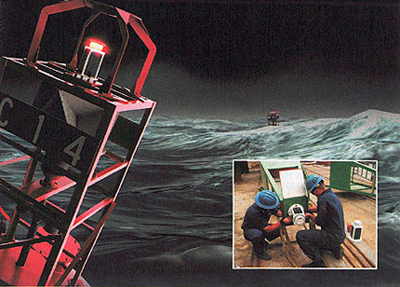Carmanah Technologies Inc. has been awarded two additional Standing Offer Contracts with the Canadian Coast Guard (CCG) for the purchase of the Company’s self-contained, solar LED marine lights and related accessories.
The combined value of these two new Standing Offers is up to $828,000, and they are valid from August 10, 2005 to September 30, 2007, with a possible extension to September 30, 2008. Throughout the duration of these Standing Offer Contracts, authorized representatives of the CCG are permitted to place call-up orders of up to $40,000, including applicable taxes. Under the terms of each contract, Carmanah’s solar-powered LED marine fights may be purchased for use on fixed and floating aids-to-navigation applications requiring either 1.5 or 2 nautical miles of visibility.
 |
|
These Standing Offer Contracts follow two previous supply agreements, the first of which was awarded to Carmanah in May of 2002, and the second on June 27, 2005. The second, most recent contract was for the purchase of the Company’s three-mile marine lanterns, a contract worth $875,000 and valid from June 10, 2005 to September 30, 2007, with a possible extension to September 30, 2008.
“Carmanah was the only solar LED marine lantern supplier to satisfy the Canadian Coast Guard’s rigorous standards, which is a testament to our technological leadership,” states Carmanah’s CEO, Art Aylesworth. “We are honored and proud to be selected as a technology partner by the Canadian Coast Guard. Carmanah is now positioned as the only supplier for solar LED marine lanterns with 1.5, 2 and 3 nautical miles of visibility.”
The Standing Offer Contracts outlined above are Canadian Coast Guard initiatives under its Marine Aids Modernization (“MAM”) Project, which began in 1996/97. The MAM Project’s purpose was to reduce maintenance expenditures on Canada’s Aids-toNavigation system through the use of better quality equipment and modern technologies. Specific objectives were to:
- Convert larger solarized traditional buoys to smaller buoys where private contractors could perform maintenance of the buoys regionally at a lower cost.
- Increase the maintenance intervals on larger buoys by replacing traditional solarized incandescent lighting with self-contained, solar LED lighting.
- Ensure that the Canadian Coast Guard maintains its international commitment to keep its marine lights functioning 99% of the time.
Without compromising boater safety in any way, the impact of the MAM Project has been dramatic. In the Maritimes alone, the Canadian Coast Guard has been able to contract out the ongoing maintenance of 3,400 smaller buoys, leaving only 100 large buoys to be serviced by its fleet. Vessel support required for buoy maintenance in this region has been cut from 1,500 annual vessel clays in 1994/1995 to less than 200 annual vessel days by the end of 2004.
The Canadian Coast Guard estimates it has already saved more than $31M in fully-allocated costs through implementation of the MAM Project and the use of modern LED fighting technologies in the Maritimes – including thousands of Carmanah’s self-contained, solar LED lights.
For more information, visit carmanahmarine.com